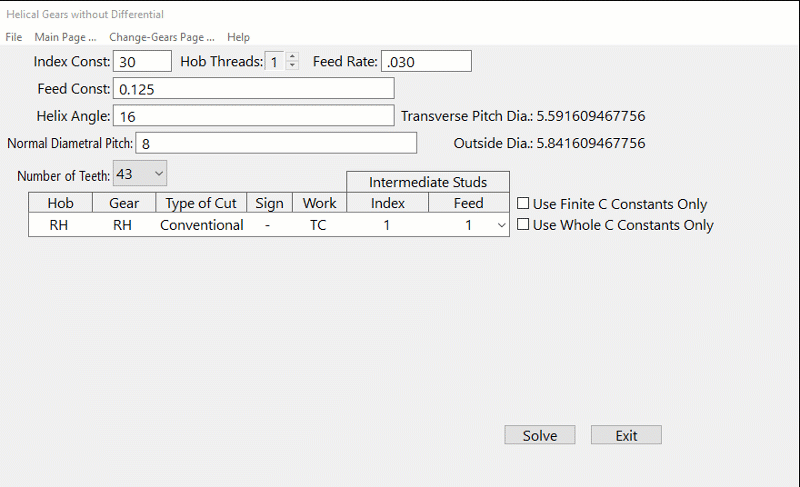David_M
Hot Rolled
- Joined
- Sep 30, 2014
- Location
- Midway, GA, USA
Index constant: 24
Feed constant: 0.075
Number of teeth: 37
Normal diametral pitch: 20
RH helix
RH hob; 1 thread
Work TC
C-constant: 25
Helix angle: 15.999999977526763773037108877645
Index gearing
25 x 24 x 1 = 600; 3 x 600 = 1800 with a factor pair of (40 x 45)
(25 x 37) - 1 = 924; 3 x 924 = 2772 with a factor pair of (63 x 44)
Feed gearing
0.15707963267948966192313216916398 / (25 x 0.075 x 0.27563735543996162104130573493773) =
0.30393487109905020352781546811398
0.30393487109905020352781546811398 = (32 x 49) / (77 x 67)
Feed constant: 0.075
Number of teeth: 37
Normal diametral pitch: 20
RH helix
RH hob; 1 thread
Work TC
C-constant: 25
Helix angle: 15.999999977526763773037108877645
Index gearing
25 x 24 x 1 = 600; 3 x 600 = 1800 with a factor pair of (40 x 45)
(25 x 37) - 1 = 924; 3 x 924 = 2772 with a factor pair of (63 x 44)
Feed gearing
0.15707963267948966192313216916398 / (25 x 0.075 x 0.27563735543996162104130573493773) =
0.30393487109905020352781546811398
0.30393487109905020352781546811398 = (32 x 49) / (77 x 67)




